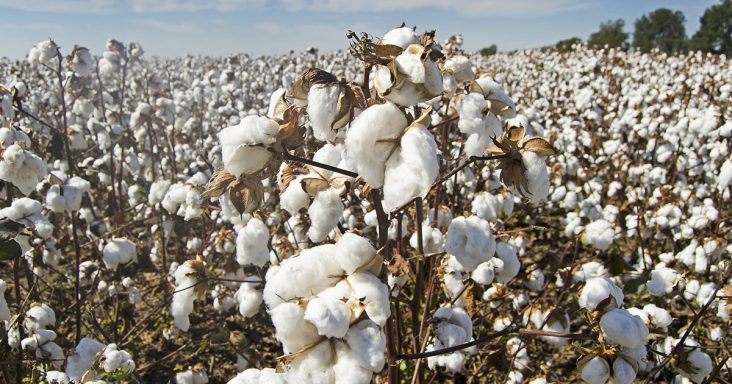Cotton planting lags due to wet weather in Northeast Arkansas
by May 19, 2021 12:45 pm 1,372 views

Another rainy spring is providing an all too familiar challenge to cotton farmers this year.
Monday’s “Crop Progress” report from the National Agricultural Statistics Service showed farmers across the board making best use of the previous week’s dry weather, with 26% of the crop going in the ground since the week-before report. Most of the planting was done from Friday to Sunday.
“We have a track record of making later-than-we-like-to-plant cotton to work for us,” Bill Robertson, extension cotton agronomist for the University of Arkansas System Division of Agriculture, said. “With 12-row planters in the current situation we have for cotton right now, we can plant about 10% of our acres in one day if planters are rolling statewide.”
Scott Stiles, extension economist for the Division of Agriculture, said this year is looking very similar to last year’s planting season and it might not be as bad as it seems.
“We were dealing with a similar situation last year in cotton,” said Stiles. “At this point, we were right at the halfway mark, or maybe 45%, on planting progress. Somehow, everything worked out and we had the second highest yield on record. All the hurricane activity stepped in the way of a record crop in my opinion.”
“To overcome late planting growers will need to repeat all the key steps taken in 2020 and precisely manage all the needs of the crop from start to finish,” Stiles said, including close attention to factors such as variety selection, planting density, twice weekly scouting from square to mid-bloom, avoiding excess nitrogen as well as timely irrigation and harvest aid application.
Even with that huge effort last week, cotton was still 45% planted, compared to the 60% five-year average.
“I see two things coming down the pike right now,” Robertson said. “Likely, this next weekend or next week before we get back into the field and will be knocking on the door of June.”
Planned acreage for the state dropped 7% from 2020’s 525,000 acres, down to about 490,000 acres. Robertson said the decrease in acreage reflected the comparative ease — and lower input costs — with which corn and soybeans can be successfully grown.
Nationally, the change in planned cotton acreage was essentially flat, falling less than 1% from 2020 acreage to about 12 million acres.
Planting is expected to increase during the next week.
“We will see more cotton being planted next week but will shift away completely from the later-maturing varieties which are part of our holistic management approach for short-season cotton,” Robertson said. The second part is that “we will see those who can start shifting plans from cotton to soybeans.”
Robertson said forecasts were calling for high pressure to sit on top of the state for a bit, which means a halt to rain, needed to keep the soil moisture for germination.
“We will need to be careful to preserve soil moisture for planting and hope we can get some moisture to activate our herbicides,” he said.
Stiles said that “heat is something we desperately need.” Cotton needs 50 to 60 heat units from planting to emergence. Since May 1 he estimated the state had accumulated 60 heat units.
“Assuming we’re back to planting by the 20th, that portion of the crop will be planted in a much more favorable temperature environment and should emerge faster and healthier,” he said.
“You know the old saying about Arkansas that we are usually no more than two weeks away from a drought,” Robertson said. “Cotton can handle things when it’s a little too wet or a little too dry, but the extremes of going back and forth is a killer.”
